 W
WCaptain Samuel Bellamy, later known as "Black Sam" Bellamy, was an English pirate who operated in the early 18th century. He is best known as the wealthiest pirate in recorded history, and one of the faces of the Golden Age of Piracy. Though his known career as a pirate captain lasted little more than a year, he and his crew captured at least 53 ships. Called "Black Sam" in Cape Cod folklore because he eschewed the fashionable powdered wig in favor of tying back his long black hair with a simple band, Bellamy became known for his mercy and generosity toward those he captured on his raids. This reputation earned him another nickname, the "Prince of Pirates". He likened himself to Robin Hood, with his crew calling themselves "Robin Hood's Men".
 W
WEdward Teach, better known as Blackbeard, was an English pirate who operated around the West Indies and the eastern coast of Britain's North American colonies. Little is known about his early life, but he may have been a sailor on privateer ships during Queen Anne's War before he settled on the Bahamian island of New Providence, a base for Captain Benjamin Hornigold, whose crew Teach joined around 1716. Hornigold placed him in command of a sloop that he had captured, and the two engaged in numerous acts of piracy. Their numbers were boosted by the addition to their fleet of two more ships, one of which was commanded by Stede Bonnet; but Hornigold retired from piracy toward the end of 1717, taking two vessels with him.
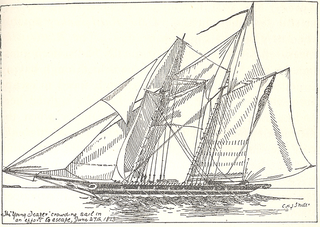 W
WYoung Teazer was a United States privateer schooner that captured 12 British vessels, five of which made it to American ports. A member of her crew blew her up at Mahone Bay, Nova Scotia during the War of 1812 after a series of British warships chased her and after HMS Hogue trapped her. The schooner became famous for the deadly explosion that killed most of her crew and for the folklore about the ghostly "Teazer Light."
 W
WLa Chasse-galerie also known as "The Bewitched Canoe" or "The Flying Canoe" is a popular French-Canadian tale of Coureurs des bois who make a deal with the devil, a variant of the Wild Hunt. Its best-known version was written by Honoré Beaugrand (1848–1906). It was published in The Century Magazine in August 1892.
 W
WRoberto Cofresí (Kupferschein) y Ramírez de Arellano Segarra, better known as El Pirata Cofresí, was a pirate from Puerto Rico. He was born into a noble family, but the political and economic difficulties faced by the island as a colony of the Spanish Empire during the Latin American wars of independence meant that his household was poor. Cofresí worked at sea from an early age which familiarized him with the region's geography, but it provided only a modest salary, and he eventually decided to abandon the sailor's life and became a pirate. He had previous links to land-based criminal activities, but the reason for Cofresí's change of vocation is unknown; historians speculate that he may have worked as a privateer aboard El Scipión, a ship owned by one of his cousins.
 W
WDavy Jones' Locker is a metaphor for the bottom of the sea: the state of death among drowned sailors and shipwrecks. It is used as a euphemism for drowning or shipwrecks in which the sailors' and ships' remains are consigned to the depths of the ocean.
 W
WJohn Derdrake, known as “Jack of the Baltic,” was a legendary Danish pirate that might have been active in the 1700s. His story, if true, makes him one of the few pirates known to force his victims walk the plank.
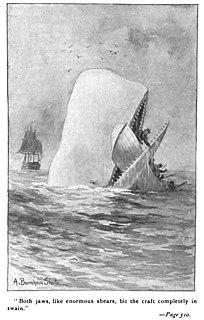 W
WThe Devil Whale is a legendary demonic whale-like sea monster. According to myths, this whale is of enormous size and could swallow entire ships. It also resembles as an island when it's sleeping, and unsuspecting sailors put ashore on its back. When the sailors start a fire, the Devil Whale awakes and attacks the ship, dragging it to the bottom of the sea. Because of this Christianity began associating the whale with the Devil. This story is found in Sinbad the Sailor.
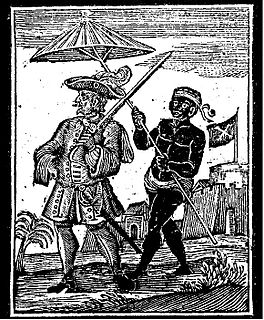 W
WHenry Every, also known as Henry Avery, sometimes erroneously given as Jack Avery or John Avery, was an English pirate who operated in the Atlantic and Indian oceans in the mid-1690s. He probably used several aliases throughout his career, including Benjamin Bridgeman, and was known as Long Ben to his crewmen and associates.
 W
WThe Flying Dutchman is a legendary ghost ship which was said to never be able to make port, doomed to sail the oceans forever. The myth is likely to have originated from the 17th-century Golden Age of the Dutch East India Company (VOC) and Dutch maritime power. The oldest extant version of the legend has been dated to the late 18th century. According to the legend, if hailed by another ship, the crew of the Flying Dutchman was said to try to send messages to land, or to people long dead. Purported sightings in the 19th and 20th centuries claimed that the ship glowed with a ghostly light. In ocean lore, the sight of this phantom ship is a portent of doom.
 W
WJosé Gaspar, also known by his nickname Gasparilla, is an apocryphal Spanish pirate, the "Last of the Buccaneers," who is claimed to have roamed and plundered across the Gulf of Mexico and the Spanish Main from his base in southwest Florida. Details about his early life, motivations, and piratical exploits differ in different tellings. However, the various versions agree that he was a remarkably active pirate during Florida's second Spanish period, that he amassed a huge fortune by taking many prizes and ransoming many hostages, and that he died by leaping from his ship rather than face capture by the U.S. Navy, leaving behind an enormous and as-yet undiscovered treasure.
 W
WWilliam Henry "Bully" Hayes was a notorious American-born ship's captain who engaged in blackbirding in the 1860s and 1870s.
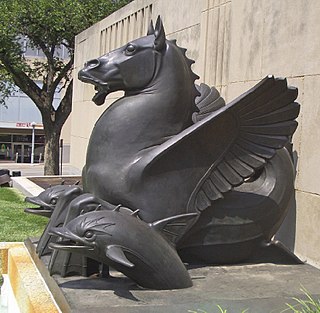 W
WThe hippocampus or hippocamp, also hippokampos, often called a sea-horse in English, is a mythological creature shared by Phoenician, Etruscan, Pictish, Roman and Greek mythology, though its name has a Greek origin. The hippocampus has typically been depicted as having the upper body of a horse with the lower body of a fish.
 W
WWilliam Kidd, also known as Captain William Kidd or simply Captain Kidd, was a Scottish sailor who was tried and executed for piracy after returning from a voyage to the Indian Ocean. Some modern historians, for example Sir Cornelius Neale Dalton, deem his piratical reputation unjust.
 W
WA Klabautermann is a water kobold that assists sailors and fishermen on the Baltic and North Sea in their duties. It is a merry and diligent creature, with an expert understanding of most watercraft, and an irrepressible musical talent. It is believed to rescue sailors washed overboard. The name comes from the Low German verb klabastern meaning "rumble" or "make a noise". An etymology deriving the name from the verb kalfatern has also been suggested.
 W
WJean Lafitte was a French pirate and privateer who operated in the Gulf of Mexico in the early 19th century. He and his older brother Pierre spelled their last name Laffite, but English language documents of the time used "Lafitte". This has become the common spelling in the United States, including places named after him.
 W
WThe Lagoda is a half-scale model of the whaling ship Lagoda, located at the New Bedford Whaling Museum. The original ship was built in 1826, converted to a whaling ship in 1841, and broken up in 1899. The model was commissioned in 1916 and is the world's largest whaling ship model.
 W
WThis is a list of fictional pirates, organized into either air pirates, sea pirates, or space pirates. They may be outlaws, but are not the same as space marines or space cowboys in space westerns. To learn more about pirates an their context in popular culture as a whole, see the Pirates in popular culture and List of pirate films pages.
 W
WA ghost ship, also known as a phantom ship, is a vessel with no living crew aboard; it may be a ghostly vessel, such as the Flying Dutchman, or a physical derelict found adrift with its crew missing or dead, like the Mary Celeste. The term is sometimes used for ships that have been decommissioned but not yet scrapped, as well as drifting boats that have been found after breaking loose of their ropes and becoming carried away by the wind or the waves.
 W
WJohn Martel was a French pirate active in the Caribbean.
 W
WThe Merlion is the national symbol of the city-state of Singapore. It is depicted as a mythical creature with the head of a lion and the body of a fish. Being of prominent symbolic nature to Singapore and Singaporeans in general, it is widely used to represent both the country and its people in sports teams, advertising, branding, tourism and as a national personification and patriotic emblem of the Singaporean nation.
 W
WMoby-Dick; or, The Whale is an 1851 novel by American writer Herman Melville. The book is the sailor Ishmael's narrative of the obsessive quest of Ahab, captain of the whaling ship Pequod, for revenge on Moby Dick, the giant white sperm whale that on the ship's previous voyage bit off Ahab's leg at the knee. A contribution to the literature of the American Renaissance, Moby-Dick was published to mixed reviews, was a commercial failure, and was out of print at the time of the author's death in 1891. Its reputation as a "Great American Novel" was established only in the 20th century, after the centennial of its author's birth. William Faulkner said he wished he had written the book himself, and D. H. Lawrence called it "one of the strangest and most wonderful books in the world" and "the greatest book of the sea ever written". Its opening sentence, "Call me Ishmael", is among world literature's most famous.
 W
WMocha Dick was a male sperm whale that lived in the Pacific Ocean in the early 19th century, usually encountered in the waters near Mocha Island, off the central coast of Chile. American explorer and author Jeremiah N. Reynolds published his account, "Mocha Dick: Or The White Whale of the Pacific: A Leaf from a Manuscript Journal" in 1839 in The Knickerbocker. Mocha Dick was an albino and partially inspired Herman Melville's 1851 novel Moby-Dick.
 W
WMother Carey is a supernatural figure personifying the cruel and threatening sea in the imagination of 18th- and 19th-century English-speaking sailors. The entity was supposed to be a harbinger of storms and a similar character to Davy Jones.
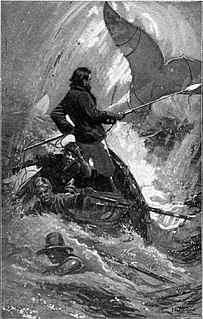 W
WNautical fiction, frequently also naval fiction, sea fiction, naval adventure fiction or maritime fiction, is a genre of literature with a setting on or near the sea, that focuses on the human relationship to the sea and sea voyages and highlights nautical culture in these environments. The settings of nautical fiction vary greatly, including merchant ships, liners, naval ships, fishing vessels, life boats, etc., along with sea ports and fishing villages. When describing nautical fiction, scholars most frequently refer to novels, novellas, and short stories, sometimes under the name of sea novels or sea stories. These works are sometimes adapted for the theatre, film and television.
 W
WPiracy was a phenomenon that was not limited to the Caribbean region. Golden Age pirates roamed off the coast of North America, Africa and the Caribbean.
 W
WThe era of piracy in the Caribbean began in the 1500s and phased out in the 1830s after the navies of the nations of Western Europe and North America with colonies in the Caribbean began combating pirates. The period during which pirates were most successful was from the 1660s to 1730s. Piracy flourished in the Caribbean because of the existence of pirate seaports such as Port Royal in Jamaica, Tortuga in Haiti, and Nassau in the Bahamas. Piracy in the Caribbean was part of a larger historical phenomenon of piracy, as it existed close to major trade and exploration routes in nearly all the five oceans.
 W
WIn English-speaking popular culture, the modern pirate stereotype owes its attributes mostly to the imagined tradition of the 18th century Caribbean pirate sailing off the Spanish Main and to such celebrated 20th century depictions as Captain Hook and his crew in the theatrical and film versions of J. M. Barrie's children's book Peter Pan, Robert Newton's portrayal of Long John Silver in the 1950 film adaptation of the Robert Louis Stevenson novel Treasure Island, and various adaptations of the Middle Eastern pirate, Sinbad the Sailor. In these and countless other books, movies, and legends, pirates are portrayed as "swashbucklers" and "plunderers". They are shown on ships, often wearing eyepatches or peg legs, having a parrot perched on their shoulder, and saying phrases like "Arr, matey" and "Avast, me hearty". Pirates have retained their image through pirate-themed tourist attractions, film, toys, books and plays.
 W
WQueen Anne's Revenge was an early-18th-century ship, most famously used as a flagship by Edward Teach, better known by his nickname Blackbeard. Although the date and place of the ship's construction are uncertain, it was originally believed she was built for merchant service in Bristol, England in 1710 and named Concord, later captured by French privateers and renamed La Concorde. After several years' service with the French, she was captured by Blackbeard in 1717. Blackbeard used the ship for less than a year, but captured numerous prizes using her as his flagship.
 W
WThe common phrase "red sky at morning" is a line from an ancient rhyme often repeated by mariners:
 W
WThe Rime of the Ancient Mariner is the longest major poem by the English poet Samuel Taylor Coleridge, written in 1797–98 and published in 1798 in the first edition of Lyrical Ballads. Some modern editions use a revised version printed in 1817 that featured a gloss. Along with other poems in Lyrical Ballads, it is often considered a signal shift to modern poetry and the beginning of British Romantic literature.
 W
WThe Rime of the Ancient Mariner has been referenced in various works of popular culture.
 W
WSadko is the principal character in an East Slavic epic bylina. He was an adventurer, merchant, and gusli musician from Novgorod.
 W
WSailor tattoos refer to a type of tattoo traditionally favored by sailors and the traditions that accompany these tattoos. "Old school" tattoos were common among sailors, depicting images like swallows on either side of the chest, girls in sailor hats, and pairs of dice. Sailor Jerry's work typified this style of tattooing during the early-mid twentieth century. After falling out of style for several decades, these stylized tattoos are regaining popularity again among young people, both sailors and non-sailors. They are particularly favored among tattoo artists themselves. This returning trend is also seen in the increasing popularity of traditional Sailor Jerry designs, nautical tattoos and even clothing printed with stylized sailor tattoo images.
 W
WA Sailortown is a district in seaports that catered to transient seafarers. These districts frequently contained boarding houses, public houses, brothels, tattoo parlours, print shops, shops selling nautical equipment, and religious institutions offering aid to seamen; usually there was also a police station, a magistrate's court and a shipping office. Because it took several days, in the past, to unload ships, crews would spend this time in sailortown. These were "generic locations—international everyplaces existing in nearly every port." Cecily Fox Smith wrote that 'dockland, strictly speaking, is of no country—or rather it is of all countries'". Sailortowns were places where local people, immigrants, social and religious reformers, and transitory sailors met.
 W
WSea monsters are beings from folklore believed to dwell in the sea and often imagined to be of immense size. Marine monsters can take many forms, including sea dragons, sea serpents, or multi-armed beasts. They can be slimy and scaly and are often pictured threatening ships or spouting jets of water. The definition of a "monster" is subjective; further, some sea monsters may have been based on scientifically accepted creatures, such as whales and types of giant and colossal squid.
 W
WIn heraldry, the term sea-lion refers to a legendary creature that has the head and upper body of a lion, but with webbed forelimbs and a fish tail. These occur most frequently as supporters, but also occur as crests and occasionally as charges. Sea-lions are frequently found in "sejant" or "sejant-erect" attitudes, but may also be found "naiant" or "assurgeant".
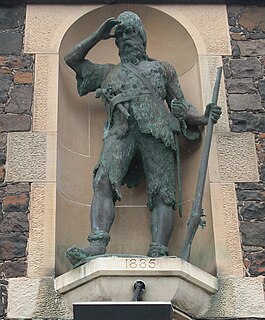 W
WAlexander Selkirk was a Scottish privateer and Royal Navy officer who spent four years and four months as a castaway (1704–1709) after being marooned by his captain on an uninhabited island in the South Pacific Ocean. He survived that ordeal, but succumbed to tropical illness years later while serving aboard HMS Weymouth off West Africa.
 W
WSinbad the Sailor is a fictional mariner and the hero of a story-cycle of Middle Eastern origin. He is described as hailing from Baghdad during the early Abbasid Caliphate. In the course of seven voyages throughout the seas east of Africa and south of Asia, he has fantastic adventures in magical realms, encountering monsters and witnessing supernatural phenomena.
 W
WThe swallow tattoo was a symbol used historically by sailors to show off their sailing experience. Of British origin in the early days of sailing, it was the image of a barn swallow, usually tattooed on the chest, hands or neck.
 W
WTerra Australis was a hypothetical continent first posited in antiquity and which appeared on maps between the 15th and 18th centuries. The existence of Terra Australis was not based on any survey or direct observation, but rather on the idea that continental land in the Northern Hemisphere should be balanced by land in the Southern Hemisphere. This theory of balancing land has been documented as early as the 5th century on maps by Macrobius, who uses the term Australis on his maps.
 W
WWhydah Gally was a fully rigged galley ship that was originally built as a passenger, cargo, and slave ship. On the return leg of her maiden voyage of the triangle trade, Whydah Gally was captured by the pirate Captain Samuel "Black Sam" Bellamy, beginning a new role in the Golden Age of Piracy.
 W
W"The Wreck of the Hesperus" is a narrative poem by American poet Henry Wadsworth Longfellow, first published in Ballads and Other Poems in 1842. It is a story that presents the tragic consequences of a skipper's pride. On an ill-fated voyage in winter, he brings his daughter aboard ship for company. The skipper ignores the advice of one of his experienced men, who fears that a hurricane is approaching. When the storm arrives, the skipper ties his daughter to the mast to prevent her from being swept overboard. She calls out to her dying father as she hears the surf beating on the shore, then prays to Christ to calm the seas. The ship crashes onto the reef of Norman's Woe and sinks; the next morning a horrified fisherman finds the daughter's body, still tied to the mast and drifting in the surf. The poem ends with a prayer that all be spared such a fate "on the reef of Norman's Woe."